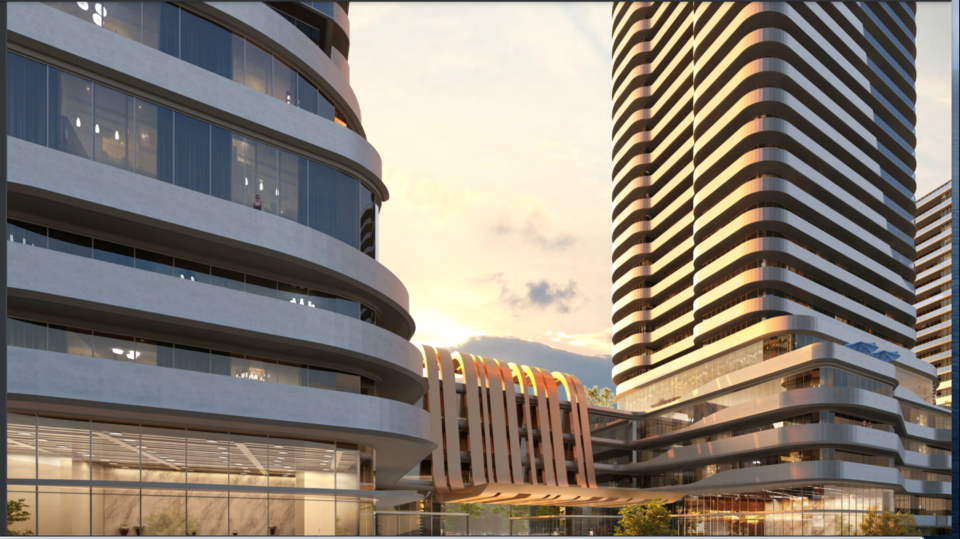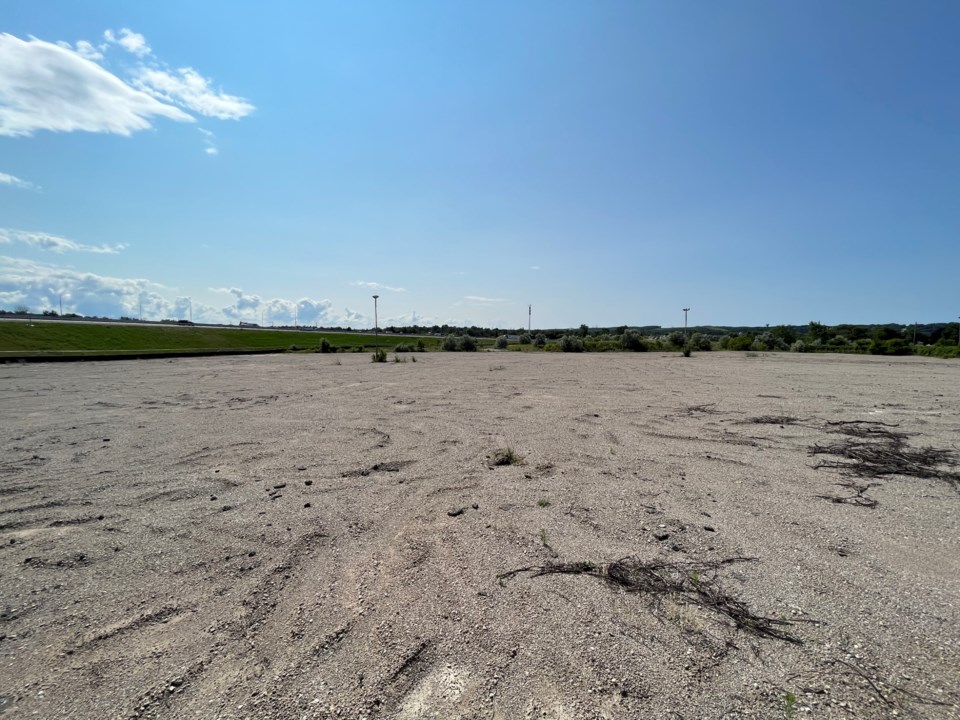Decisions on how and especially how fast to develop Barrie’s old fairgrounds, located at Essa Road and Highway 400, could begin tonight.
Greenworld Construction, owner of 175 and 199 Essa Rd. and 50 Wood St., has asked the city to support what’s called a community infrastructure and housing accelerator (CIHA) order for the property. This would give Ontario’s minister of municipal affairs and housing the power to make orders to respond to municipal requests to fast-track zoning outside of the Greenbelt.
The city’s affordability committee will consider the request at Wednesday's meeting.
“It’s just really far too dense. It’s adding too many people to too small an area too rapidly,” said Mary O’Neill, a longtime Barrie resident who works in children’s services. “If these (plans) go through, we’re not going to be looking at blue skies and birds, we’re going to be looking at skyscrapers.
“I do support that something’s got to be done with that land, but I don’t support this," she added.
The CIHA order would support the development of 4,054 total residential units — highrises, mixed-use highrises and townhouses, along with commercial uses and a school block. That breaks down to 13 residential towers of 15 to 40 storeys, 113 townhouses and 98 three-storey townhouses on these 55.4 acres.
Jason Seguin, an archaeologist, moved from Hamilton in July and is renting a place on nearby Campbell Avenue.
“I feel bad for anyone who lives here,” he said of the proposed fairgrounds project. “I won’t be staying.”
Seguin said the traffic alone that would be created by this development is discouraging.
“Coming off (Highway 400) now it’s crazy. You will never get across the street,” he said. “It’s crazy busy. But I can’t see this (development) happening anytime soon.”
Erika Wall has lived for four years on Campbell Avenue property, which backs onto the former fairgrounds.
“Nobody out here wants that behind us, to have that many more people behind us,” she said.
Wall noted there was once a plan for townhouses and smaller apartments that would have been acceptable to area residents.
“It has changed so many times now and it just gets bigger and bigger,” Wall said. “Nobody doesn’t think this will be developed, but nobody wants 10,000 people behind us.”
She has concerns too about how much new traffic this development will generate.

Also proposed in the new development are 196 parking spaces for the townhouses and 3,260 spots for the highrises, including those in a five-storey parking podium. There could be a public/private park almost a half acre in size and walking trails.
Commercial uses would front Essa Road, the school block would be six acres and there would be no development on the Wood Street property, which includes Hotchkiss Creek. It would be used for stormwater management and open space uses.
The development proposed includes two new city access points from Essa Road and Anne Street.
The Barrie Curling Club would remain as is.
Last April, Greenworld's plan for the old fairgrounds was 2,828 residential condos and townhouses in nine towers, with heights from 12 to 35 storeys, along with retail space. The property still needed to be rezoned and redesignated with an Official Plan change, and have its draft plan of subdivision approved.
“Maybe I’d find it more palatable if one of the towers was co-op housing, or one with exclusively rental housing, which is really where our real need for housing is in Ontario — affordable housing,” O’Neill said. “It’s not that we don’t have enough units, per se, it’s just we don’t have people who can afford the units.
"The point being is that no one can afford it.”
Greenworld’s planning consultant calls the old fairgrounds property under-utilized, vacant land, at the prominent location of Highway 400 and Essa Road. They say the land provides an opportunity to substantially contribute to Barrie’s housing stock and provide for development to take place in a comprehensive and cohesive manner, in an area where intensification is encouraged.
Barrie is designated by the Growth Plan for the Greater Golden Horseshoe as an area where the projected population and residential growth is to be accommodated through 'ambitious' levels of development, with emphasis placed on the development of land to support new housing options along intensification corridors and within designated strategic growth areas.
O’Neill also says she is concerned about the so-called strong mayor powers Barrie Mayor Alex Nuttall has been given by Ontario Premier Doug Ford, and how they could affect decisions surrounding this development.
“Even if the councillors don’t vote to support it, (Nuttall) can veto and push it through anyway,” she said. “And I definitely feel that he is completely on board with Ford’s vision of an intensified corridor running through Barrie.
“Super powers given to the mayors have turned us from a democratic process, where councillors can advocate of behalf of their constituents, into basically a single person making the decisions,” O’Neill added. “That I find disheartening.”
The strong mayor powers were granted to many municipalities, including Barrie, on July 1. They are designed to speed passage of key, shared municipal-provincial priorities, such as housing and infrastructure. The powers include granting mayors a veto on council decisions conflicting with these provincial priorities, although a two-thirds majority of council can override the mayor’s veto.
Mayors can also propose housing-related bylaws and pass them with the support of one-third of councillors, as well as override council approval of bylaws, such as a zoning bylaw that would stall home building — part of the province’s plan for 1.5 million new homes built by 2031, including 23,000 in Barrie.
Michelle Banfield, the city’s director of development services, has said the old fairgrounds property has a development application under review.
On Nov. 1, the city received correspondence from the applicant requesting the approval be considered through the community infrastructure and housing accelerator process, as opposed to completing the Planning Act applications.
Should council wish to support the applicant’s request, staff would be directed to process this as a CIHA and report back, she said. If council is satisfied, staff would be directed to submit council’s request for a CIHA to the minister of municipal affairs and housing.
But it will be council’s decision whether or not to ask the minister for a CIHA order.
Ontario’s More Homes for Everyone Act, 2022, changes the Planning Act to create a minister’s order authority — known as the community infrastructure and housing accelerator tool — giving the municipal affairs and housing minister the power to make orders to respond to municipal requests for expedited zoning, not counting the Greenbelt.
In a memo to councillors, Banfield has said a CIHA can be used to regulate the use of land and the location, use, height, size and spacing of buildings and structures to permit certain types of development. The requesting municipality is responsible for providing public notice and undertaking consultation and ensuring the order, once made, is made available to the public.
In issuing the order, Banfield’s memo says the minister can provide an exemption for other necessary planning-related approvals from provincial plans, the Provincial Policy Statement and municipal Official Plans, if specifically requested by the municipality, and impose conditions on the municipality and/or proponent.
The affordability committee has only four of 11 members of council — Coun. Jim Harris, who represents the part of Barrie containing the fairgrounds, Coun. Craig Nixon, Nuttall and Deputy Mayor Robert Thomson. Its decision still requires approval from general committee and city council, both which have 11 council members.
Tonight's affordability committee meeting is scheduled to begin at 6 p.m. in the Council Chambers.

